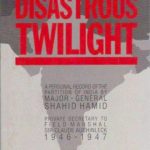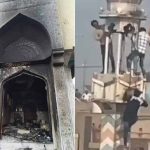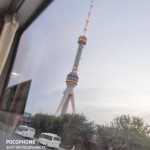BTN Seminar- 23May 2022- Quetta
Opening Address by Brig.Agha Ahmad Gul, (R)
- Choice of Word. BTTN is hosting its 1st Seminar today before becoming one-year old. The Topic of the Seminar is, “Balochistan’s Geostrategic Significance, the Politics of Major Powers Managing its impact”. I wish to start by explaining the choice of word, “Balochistan”. Balochistan is integral part of Pakistan and whatever importance it has, and its significance for major or small powers due to its geographical location, equally applies to Pakistan.
- However, there are geographical and historical peculiarities of Balochistan which necessitated the selection of word Balochistan rather than Pakistan’s Geostrategic Significance. I shall briefly explain.
- Rigours of Geography. Balochistan is an arid semi-desert land with less than 3 inches yearly rain. Consequently, there are no rivers, no lakes. Ancient karezes and springs have all dried up, partly due to tube wells relentlessly mining water from depths of a 8-900 feet or about, with ever lowering water-table and partly due to persistent droughts. Even the 770 km long Balochistan’s Coastline has no sweet water and has to depend on sporadic rain. In Kech (Mekran) the first line of four oasis which has allowed establishment of Hoshab, Turbat, Tump and Mand towns is nearly 100 miles north of the coastline with no water in between.
- Northern Balochistan gets tail-end of monsoon rains and even westerly disturbances bring some rain in the winters. Besides, they have historically some legal, some illegal trade with Afghanistan and financially are better off. Nasirabad enjoys canal waters but is a small part of this huge province restricting economic benefits to them only.
- The population in Southern Balochistan is the hardest hit by the rigours of geography. It gets very little rains, sometimes for years some areas do not get any rain. The climate is very harsh. Summers are worst with temperatures routinely reaching 50 c. Shad less, parched, dry terrain allows very sparse population which is very poor and has to survive on livestock or petty jobs. Barren, inaccessible plateaus and rocky mountains having no water for often hundreds of miles, used to once provide protection to highwaymen. Now militants find safe havens in these barren lands with no fear of being intercepted in areas having no tracks, not even wildlife due to complete lack of water.
- Southern Balochistan’s proximity to the Iranian border having Balochi speaking population and a porous border further facilitates militants who can slip into Iran’s Seistan-Balochistan. Southern Balochistan, thus has become the soft-underbelly of Pakistan, hence the selection of this name for the Seminar, today.
- Historical Background From Gedorasia to 3 Balochistans. The Coastline in the present day Southern Balochistan is first mentioned in post Alexander’s invasion in 325. B.C as Gedorasia, and several centuries later, as Turan. Being barren and non-productive, this part of the world did not attract invaders, explorers and even attention of historians. However, from 18th Century onwards, the word Balochistan started emerging. There have been 3 Balochistans with different political-maps whose existence is generally unknown and thus creates wrong perceptions today, giving birth to expressions like ‘Deprivations’, ‘Neglect’ and ‘Left-behind’ in Pakistan. Allow me to explain this.
- In 1739, Emperor Nadir Shah Qachar, the Shah of Persia conquered Delhi. However, he let the Mughal King rule in his name as a Tributary. In 1742 Nader Shah divided south-eastern Persia in two provinces, Seistan-Balochistan and Kalati-Balochistan. Kalati-Balochistan till then called Turan, was more or less the present day Southern Balochistan. After the death of Nadir Shah, his General Ahmad Shah Durrani, now the ruler of Eastern Persia and Khorasan, placed a Brahui Mir Nasir belonging to Ghandawah, south of Sibi, as Khan of Kalat to rule Kalati-Balochistan as his Tributary in 1761. This was the 1st Balochistan.
- Let’s fast forward now; in 1838, the British walked into Quetta known as Shalkot, to deter an apprehended invasion by the Czar of Russia through Central Asia. They established a military station in Shalkot naming it Quetta. They attacked Kalat and killed the sitting Khan of Kalat Mir Mehrab on suspicion of not being loyal-enough but let his brother and later son rule, as vassal state of Amir of Kabul. In 1856 the sitting Khan of Kalat Mir Khudaidad submitted to become a vassal state of British rather than Kabul, now called Afghanistan, a name given by the British which caught on.
- After the Second Anglo-Afghan War in 1879, the British occupied a region south of Afghanistan to be directly ruled by them, later named British Balochistan. However, the British Army remained in Afghanistan even during the WWII and only evacuated it in 1919 when the Czar of Russia had been overthrown by the Bolshevik Regime.
- The British Balochistan was formally created in November 1893 during a diplomatic meeting headed by the British Diplomat Sir Mortimer Durand and attended by ambassadors of Czar of Russia, Shah of Persia and King Abdul Rehman of Afghanistan. Indeed, it decided upon the entire border of Afghanistan, drawing a line between Russian controlled Khanates of Central Asia, Iran and Colonial India. The British even ceded Wakhan Corridor, part of northern Chitral so that Afghanistan could become a complete buffer state between Russia and the Colonial British Empire of India. The British Balochistan governed as Chief Commissioner-ate comprised parts of Kalati-Balochistan, Persia, Nasirabad district of Sindh and Afghanistan. Mostly Pashtuns but also Hazaras, Settlers, Sindhis and Marri /Bugti Baloch, some Kurds and Brahuis lived here. They named it British-Balochistan. This is the 2nd Balochistan.
- In 1947, on Independence, British Balochistan and Kalati-Balochistan were named as Quetta and Kalat Divisions, and administrated by West Pakistan under one Commissioner. During the next 23 years there was no Balochistan.
- In 1970, with the One Unit being abolished, the Quetta and Kalat Divisions were merged and the present Balochistan emerged. This is the 3rd Balochistan. The 3rd and present Balochistan has peculiarities which other provinces of Pakistan do not share. These ought to be explained.
- In 1843, the British had established all other provinces of Pakistan, Sindh, Punjab and KPK through conquests. These three provinces were created 127 years before Balochistan. Consequently, these provinces are socio-economically and in education far ahead, well integrated, politics and governance is also more mature. Tribes and feudalism have mellowed down to a large extent. Balochistan, especially the Southern Balochistan however, is totally still tribal, not allowing Police and a rag tag militia, Levies of the British rule still operates in Balochistan and behind the other three provinces of Pakistan in every aspect of HDI.
- The British did not develop Kalati-Balochistan at all. Even the British Balochistan, which was directly run by them they undertook bare minimum socio-economic development, considered strategically necessary to defend against an apprehended Russian invasion. At the time of Independence, there were only 9 High Schools in British Balochistan and no college. In Kalati-Balochistan, there were only madrassas, no school was being run by the British.
- In 1948 the first college was opened in Quetta and in 1971-73 the first University. In 1972, the first democratic government of Balochistan expelled 3,500 teachers (and 3,200 Policemen) from Punjab, which was nearly 80-85% of the total teachers. The dearth of educated persons was so great that near illiterate and at best class 5-pass were appointed as teachers, mostly on political considerations.
- In 1986 on political considerations, 84 persons holding fake Masters Degrees were appointed as “Helpers” in UoB without any tests. A year later they were regularized without undergoing any Selection Board’s scrutiny, again under political pressure. Many are still ‘serving’, generally as politicians and being incapable of teaching. However, some of them did acquire requisite education and became proper teachers.
- The sum of all these happenings is, that cheating, buying fake degrees, even Ph.Ds. and taking proxy exams became socially acceptable. No politician and consequently no bureaucrats took notice. Indeed, one high public office holder bragged in a Convocation that he had, ‘bought his B.A degree for Rs.42,000/-‘. Yet another high public office holder ridiculed education by saying, ‘Degree is Degree whether fake or real’. This has greatly lowered the standard of education in Balochistan at all levels. However, colleges and universities go on producing hordes of semi-literate degree-holders incapable of passing tests, doing jobs and thus being left behind. There are certainly exceptions and this is not universally applicable to all education institutions and graduates.
- This sizeable youth only seeking government jobs becomes disgruntled when they fail to qualify in tests or don’t have a strong political connection and remain unemployed. They blame Pakistan for their joblessness, deprivation and failing in competitions even within Balochistan what to talk of other provinces where the competitors are better educated. This group is an easy prey for foreign agents like Indian Naval Commander Kalbhushan Yadev who hire them for undertaking first propaganda against Pakistan, then militancy and finally terrorism. What starts initially as a well-paying job, tends to create some genuinely ideologues also willing to even get killed in their endeavours to seek ‘independence’ of probably the Southern Balochistan only.
- The contours of ‘Independent Balochistan’ have never been explained by any Baloch/Brahui or even the militants. It’s a vague term which apparently covers the entire Balochistan where a several times larger population patriotic population of different ethno-racial stock lives. However, this vagueness is capitalized by Pakistan’s enemies, India, lately the US and her allies.
- As it is, there are 7-8 times more Baloch living prosperously and happily in Punjab and 5-6 times more in Sindh than in Southern Balochistan. Northern Balochistan is inhabited by Pashtuns, Hazaras, settlers from all over Pakistan and many refugees Uzbeks, Tajiks and even Iranians and are die-hard Pakistanis.
- Recent Geostrategic / Historic Developments.
- In 1970, the Soviet Union decided to break the US’s Containment in the south by destabilizing CENTO. They tried creating insurgency in Turkey, Iran and Pakistan, members of the CENTO. A so called London-Plan was hatched by KGB in London involving some Baloch and Brahui sardars belonging to Southern Balochistan and some from Seistan-Balochistan to create Greater Balochistan. Nawab Muhammad Akbar Khan Bugti was not part of this group and indeed, was against them.
- In 1972 Pakistan transferred the political power to these very sardars who had won the election, of almost twice the size of Southern-Balochistan they wanted to cede with. The London-Plan lost its charm for them. However, this was the beginning of the talk of ‘Independence of Balochistan’. In the beginning of 1973, the PM dismissed this government of charges of serious misconduct and attempts at genocide of Jamotes of Las Bella.
- In 1973 the erstwhile BLA came into being starting KGB sponsored militancy astride two main roads of Balochistan only inhabited by Mengal and Marri clans. Indeed, the Mengal living in Noshki area did not join them. By 1975 the militancy withered away. There was complete peace in Northern and Southern Balochistan for next 33 years till 2008.
- In 1974 India carried out a nuclear detonation, thus compelling Pakistan to counter the emerging threat. In 1998 Pakistan in response to Indian nuclear explosions also tested its nukes and thus we squarely became a target for the perpetual US disapproval and then antagonism.
- In 2005, ironically, the table were reversed. Now the CIA revived the plan to contain China, Russia, Iran and keep Pakistan under pressure for strategic reasons. One Col Ralph Peter of CIA published a map showing Pakistan’s disintegration by 2015. This map and write up was duly published in the US Armed Forces Journal. The old BLA of KGB era was revived, this time by CIA and RAW. Sporadic terror acts were launched all over Balochistan, which continue albeit now greatly reduced.
- In the Southern Balochistan, the non-productive land for want of water, sparse population, abject poverty and history of erstwhile KGB sponsored BLA militancy in 1973-75 are being used as a catalyst. Development of Gwadar and CPEC all have provided justification to the enemies of Pakistan for unleashing 5th Generation War through Southern Balochistan.
- Geostrategic Location of Pakistan. The geographical location of Balochistan, indeed, Pakistan is very peculiar. In 1725, Peter the Great expressed his desire to access Warm-Waters for Russia. The straight line from St. Petersburg comes to Pakistani shores.
- China wants to use Pakistan as an Economic Corridor to access global shipping lanes and reach out to Iran and Afghanistan. Russia and CAR all can have this access. However, the US wants to contain China, Russia and even CAR and deny this Corridor. Iran does not want emergence of Gwadar as it will compete with Chahbahar for business, never mind the shallow port of Chahbahar.
- India has long seaboards in the East and West but is actually landlocked. Pending resolution of disputes due to the unfinished Agenda of the Partition, Pakistan stands like a wall, blocking India’s westward trade to Afghanistan, CAR, Russia, EU and Iran.
- Thus Pakistan is located in a Geopolitical Crush-Zone confronted by competing demands of major powers. It is a challenge, yes, but also a great opportunity by providing connectivity to all the competing major powers.
- How to manage it and how to become facilitators to all the major powers rather than becoming stumbling blocks for each one of them? That, then is the subject of today’s Seminar for which we have gathered today to listen to the experts on the subject.







